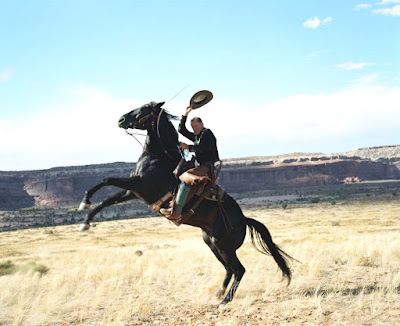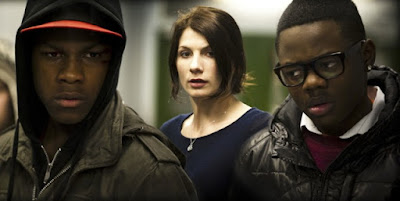Big O posted a fascinating book review recently and it is worth a view here and passed on from Counter Punch who we like . . . . . .
DYLAN AND WOODY: GOIN’ DOWN THE ROAD FEELIN’ BAD
 Daniel Wolff’s lastest book, Grown-Up Anger, is the crossroad where the sound of anger, Bob Dylan and Woody Guthrie meet. It’s also about using that anger to make the world a better place. By Ron Jacobs.
Daniel Wolff’s lastest book, Grown-Up Anger, is the crossroad where the sound of anger, Bob Dylan and Woody Guthrie meet. It’s also about using that anger to make the world a better place. By Ron Jacobs.
Anger, when directed at injustice, is useful and important. When it is placed in the hands of a writer as capable as Daniel Wolff, it becomes a thing of beauty. Wolff’s most recent book, Grown-Up Anger: The Connected Mysteries of Bob Dylan, Woody Guthrie, and the Calumet Massacre of 1913 is that thing of beauty.
It is simultaneously a history of capitalism and labor organizing in the United States, a biography of Bob Dylan and Woody Guthrie, and a critical discussion of a number of songs composed and sung by these two American icons. Like the road Guthrie and Dylan romanticized and wrote about, the author Wolff takes the reader through a winding landscape of labor unrest, capitalist greed, personal hardship and popular success. It is a story familiar to many but told in a unique fashion that brings alive Dylan and Guthrie’s songs and the social and political context they are both informed by and inform.
Wolff begins the text with a recollection of his first hearing of Bob Dylan s masterful tune “Like a Rolling Stone,” but quickly shifts to Woody Guthrie’s poignant telling of a massacre of miners’ children in Calumet, Michigan in December 1913. Guthrie’s song, titled “1913 Massacre,” is the foundation on which the text is composed.
As Wolff points out, the tune to “1913 Massacre” was appropriated by Bob Dylan for his song “Song to Woody.” That tune is the one of two original tunes (at least in terms of its lyrics) on Dylan’s first album. (The other is “Talkin’ New York.”) The rest of the album is made up of Dylan’s interpretations of various folk and country blues traditional songs.
Although Dylan was considered a folksinger at least until 1965 when he released the albums Bringing It All Back Home and Highway 61 Revisited, his first disc is arguably his only truly folk album.
As Wolff’s narrative unfolds, the reader finds himself deep in a history rich in struggle. The struggle is between the rich and the poor; the working class and the ruling class; the street and the entertainment business. The protagonists include benevolent robber barons who paid reasonable wages and provided health care and education to the workers and their families; greedy owners who acted as if their riches were the result of their blessedness and hard work when in all honesty the hard work was that of their employees and the blessedness was nonexistent.
No matter what their approach, though, when the profits were down or the workers rose up, every capitalist called in the strikebreakers and men with weapons. In short, it is the story of industrial capitalism in the USA. It is a story often told, but rarely taught. Never has it been relayed in the manner the reader discovers in Grown-Up Anger.
What about the anger? Why does the author include it in his title? Let me go back to the beginning of the text, where Wolff introduces his book and Dylan’s song “Like a Rolling Stone.” After discussing his own anger as a 13-year-old in 1965 United States - a United States that was escalating an imperial war in Vietnam while trying to temper a just and justifiable rebellion of its dark-skinned citizens with guns and money - Wolff makes a simple one-line statement about Dylan’s tune. “For all the singer’s humor and apparent ease,” he writes, “It was the sound of anger.”
When one is 13 in modern civilization, one should be angry. After all, the growing awareness that the world you’ve been living in is much crueler and meaner than you had previously believed either makes one depressed or angry. If it doesn’t, you might be a psychopath.
Teenage anger is often misdirected. All too often, that misdirection is inward, where one blames oneself for the realization that the world is troubled. Wolff’s narrative provides an alternative. Take that anger, he suggests, and turn it into grown-up anger, like Woody Guthrie and Bob Dylan, and use it to make the world a better place.
Grown-Up Anger takes the reader from Calumet, Michigan to Woodstock; from Carnegie Hall to Los Angeles; from Oklahoma to New York City; and from Mississippi back to Calumet. Its captivating tale is matched by a narrative style as easy as the road that stretches out ahead and as tight as the bonds the slavecatcher tightened around the runaway’s wrists.
Individual biographies intermingle with broad strokes of history and critical examinations of music and lyrics to create a book about song and hope, song and despair; capitalism and capitalists, working people and labor. In writing this musical and political biography of Woody Guthrie, Bob Dylan and capitalist America, Daniel Wolff has composed a text for the ages.
Note: Ron Jacobs is the author of Daydream Sunset: Sixties Counterculture in the Seventies published by CounterPunch Books. His latest offering is a pamphlet titled Capitalism: Is the Problem. He lives in Vermont.The above article was posted at Counterpunch.




























